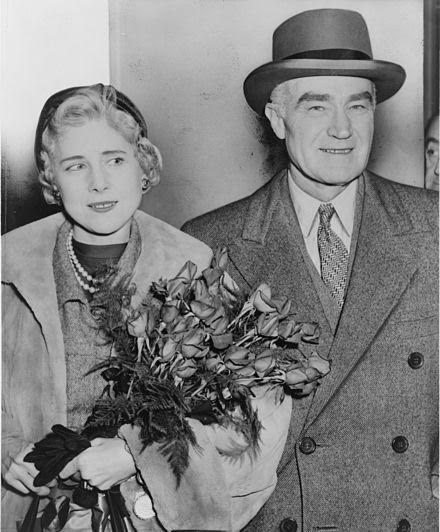
On the outskirts of Moncks Corner, on the grounds of Mepkin Abbey, is a garden framed by hanging Spanish moss, surrounded by the cheerful colors of azaleas and camellias and sitting on a high bluff overlooking the Cooper River. In this harmonious setting is the grave of the man who created the world’s first multimedia company – the publisher of Time, Fortune, Life and Sports Illustrated.
Henry Robinson Luce was co-founder of Time, Inc., the cornerstone of what is known today as Time-Warner. In his day, he was the most influential private citizen in the world. Because of his love affair with South Carolina, he chose to call Mepkin Abbey his permanent home.
Born in Dengzhou, China, in April 1898, Henry Luce traveled extensively throughout his life and was comfortable anywhere in the world. In 1923, shortly before his 24th birthday, he and a Yale classmate co-published the first issue of Time. Six years later, Luce launched Fortune, and, in 1936, he bought Life, a general interest weekly magazine, acquiring the name so he could relaunch the publication as we remember it today.
Like most publishers, Luce was always looking for new readers and challenging opportunities. He was the consummate media innovator. In 1948, Life magazine was the exclusive sponsor of the first televised national political convention. Yet, as accomplished and well-traveled as his life was, Henry Luce and his wife, Clare Boothe Luce, chose to be buried 40 miles from Mount Pleasant in Mepkin Abbey.
Clare Boothe Luce was a war correspondent; playwright; the first woman to be appointed as a U.S. ambassador; managing editor of Vanity Fair; and wife of Henry Luce. In 1943, she served as Connecticut’s first female congressman. It was well-known that Clare Luce expressed her ideas to Henry Luce regarding his publishing business. At the time of their marriage on Nov. 23, 1935, Clare had begun writing her play, “The Women,” which became a contemporary hit.
Years before her marriage to Henry Luce, Clare read the prolific verses offered by Southern poet Sidney Lanier in his “The Marshes of Glynn,” driving her to search for a winter retreat along the banks of the Cooper River. With her encouragement one year after they wed, Henry spent $100,000 to purchase Mepkin, an Indian word meaning “serene and lovely.” The 7,200-acre plantation became their winter retreat.
Within a year, Clare commissioned landscape architect Loutrel Briggs, the perfect person to design the Mepkin Gardens. Originally from New York City, his mark was on more than 100 gardens in historic Charleston. Like Henry and Clare, he was enamored by the beauty and charm of South Carolina and eventually opened a seasonal office in the Palmetto State in 1929.
Clare and Henry had ambitious plans for Mepkin Plantation, including building a house for Clare’s daughter, Ann Clare Brokaw. Her home was to be situated close to the permanent house Clare and Henry occupied on the high bluff. Unfortunately, those plans were derailed when Ann Clare was killed in a car crash at the age of 20.
In April of 1948, when Clare was celebrating her 45th birthday north of Mount Pleasant at Hobcaw Barony, Henry informed her that he had been offered $250,000 for Mepkin Plantation. She persuaded Henry to sell 4,000 acres to a local lumber merchant. With the approval of the Vatican, the remaining 3,200 acres was given to the silent Trappist monks of the Abbey of Our Lady of Gethsemani.
The Luce love affair with South Carolina and Mepkin Plantation lives on. Beneath a tall white cross in the gardens at Mepkin Abbey is a white tombstone that marks the double grave of Henry and Clare Boothe Luce. To the left is Ann Clare Brokaw. Ann Clare Austin, Clare’s mother, is to the right.


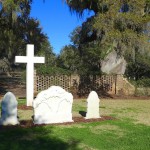
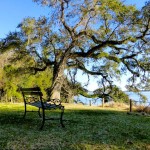
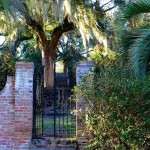
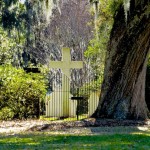
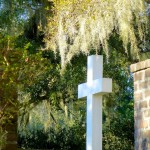
In the burial text, the name Brokaw is included. Any relation to Tom Brokaw?